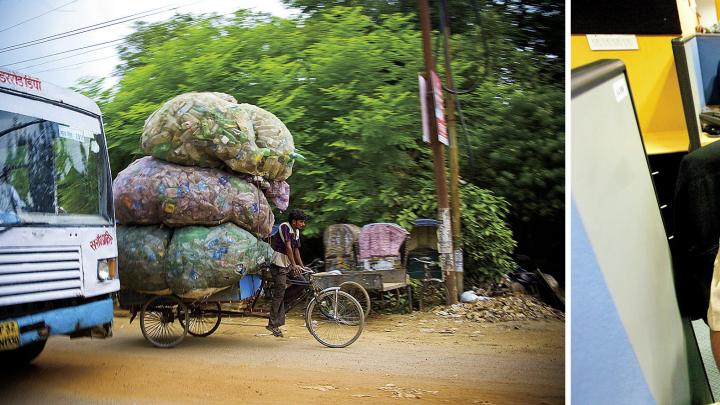China’s recent economic history looks, at first glance, like a developing-world success story. In 1980, according to World Bank estimates, average income there was less than $200, measured in current U.S. dollars. By 2013, income averaged nearly $7,000.
But averages say little about who really benefited from development during this period of increasing globalization. In fact, this economic expansion and explosion in trade has been accompanied by growing income inequality. China’s Gini index (a measure of income distribution where 0 is perfect equality and 1 is perfect inequality) has grown from roughly 0.3 in the early 1980s to above 0.45 in recent years.
According to classical economics, this is puzzling. Nineteenth-century economist David Ricardo’s theory of comparative advantage predicts that China’s poorest workers should benefit most from the growth in trade. Before globalization, that country had a huge supply of unskilled workers and relatively few high-skill workers, who were thus in high demand; the situation was just the opposite in the United States. When two such countries begin to trade, the theory states, the less-developed nation has the advantage in producing relatively low-tech products—so demand and income for under-educated workers should shoot up, while their high-skill countrymen suffer. Thus, the theory predicts, globalization should lower inequality in the developing world.
Instead, as Gates professor of developing societies Michael Kremer explains, in much of the developing world, “The empirical evidence is not really consistent with the idea that trade is reducing inequality.” He and Adams University Professor Eric Maskin, a 2007 Nobel laureate in economics, have therefore proposed a new model to help explain the discrepancy between traditional theory and current reality. The key, they say, lies in a more nuanced understanding of how global production cycles sort workers into different jobs.
Maskin and Kremer began working out their theory of “skills matching” while studying developed countries like Britain and France in the early 1990s, but they soon realized that their model helped explain the upheavals of globalization. Their explanation of how globalization interacts with inequality begins with four groups of workers: high- and low-skilled in developed countries, and high- and low-skilled in developing countries. Before globalization, the local economy produces best when high- and low-skill workers within each country pair up. Maskin points, for example, to an old textile factory in a pre-globalization India, where an engineer might manage an unskilled laborer.
But a key component of the current wave of globalization is that international production chains now allow workers to pair up across borders. After global trade begins, that Indian engineer might be hired by an American firm that has moved parts of its company to India and sees value in the engineer’s relatively skilled, yet still relatively cheap, labor. And as skilled Indian workers increasingly find jobs with international firms, the locally owned businesses which they once helped manage may be forced to close, leaving their unskilled former “partners” with no way to participate in the global economy. “That is a big difference,” Maskin concludes. “And that, we argue, may explain why there’s been such an increase in inequality in developing countries.”
Further complicating matters is the fact that even though few of these new developing-world jobs would be considered “high skill” by Western standards, they nevertheless remain out of reach for workers at the very bottom. “There’s a big difference between low skill and zero skill,” Maskin says. In countries like India, for example, call-center workers need a command of unaccented English, and maybe even a college degree. Kremer points to the even starker illustration of a Vietnamese factory producing an American-designed shoe. Low-skill workers—often peasants—“can’t even get into the shoe production,” he explains, because of the higher standards of export companies. “The factory doesn’t want to hire them unless they’ve got at least a high-school education.”
Workers in many factories in developing countries might be lower-skilled, Maskin adds, but “they have enough of an education so that they can be trained.” The lower-skilled laborers who once might have been considered competent enough to work in a factory under local management, on the other hand, are left out of the newly globalized workforce.
Maskin and Kremer emphasize that they are not making a case against trade and international production: those growing average wages are proof of globalization’s benefits. Rather, they say they are making a policy argument for education. Those at the bottom of the pyramid may not have enough resources to gain skills on their own, and their potential employers have little incentive to train them. That means that developing-world governments, along with nongovernmental organizations, must provide the education necessary to raise workers’ skills. In Cambodia, for instance, training programs have helped bring women into the thriving garment industry, giving them the industry-specific sewing skills that allow them to work from home. Gaining that skill has brought real benefits to those who otherwise might not enter the workforce.
Such programs, Maskin explains, are the best way to address the negative results of globalization. Now, having identified the problem and offered a plausible explanation, he acknowledges that the question remains: “How do you tweak the system so that people down at the bottom get something out of it, too?”








